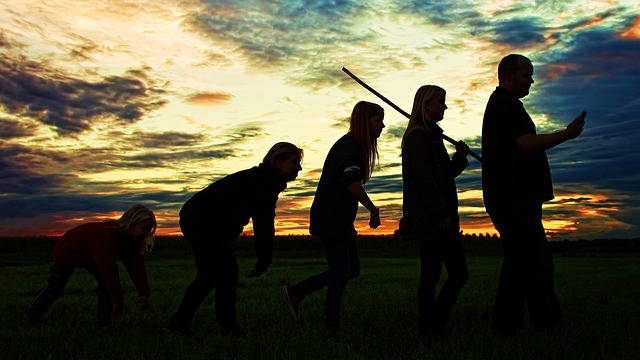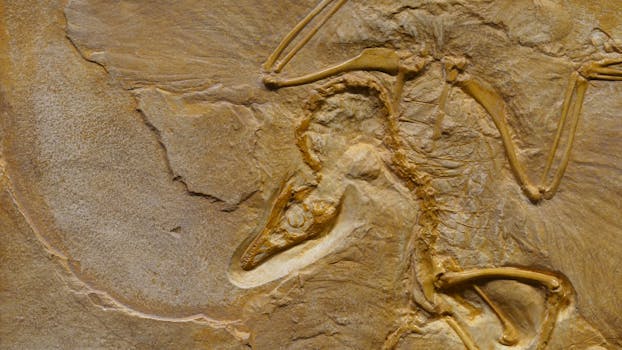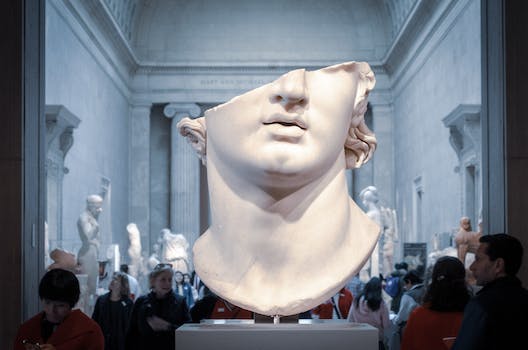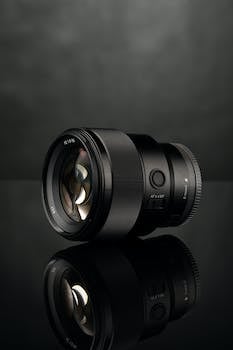-
Table of Contents
- The Influence of Artistic Styles on 19th Century Election Ballots
- Symbolism and Political Messaging in 19th Century Election Ballots
- Evolution of Typography and Design in Election Ballots during the 19th Century
- The Role of Illustration and Caricature in 19th Century Election Ballots
- Regional Variations in Artistic Representation on 19th Century Election Ballots
- The Use of Color and Visual Hierarchy in 19th Century Election Ballots
- Portraits and Personalization in 19th Century Election Ballots
- The Impact of Technological Advancements on the Artistic Evolution of Election Ballots in the 19th Century
- Historical Significance and Legacy of Artistic Election Ballots in the 19th Century
- Q&A
Unveiling the 19th Century’s Electoral Artistry.
The 19th century witnessed a significant evolution in the artistic design of election ballots. As democratic processes became more established and accessible, the visual representation of ballots began to play a crucial role in attracting voters and conveying political messages. This period saw a transition from simple, text-based ballots to more elaborate and visually appealing designs, reflecting the changing political landscape and the growing importance of public participation in elections. In this article, we will explore the artistic evolution of election ballots in the 19th century, highlighting the key developments and influences that shaped their design.
The Influence of Artistic Styles on 19th Century Election Ballots
The 19th century was a time of great artistic evolution, with various styles and movements emerging and influencing different aspects of society. One area that experienced this artistic transformation was the design of election ballots. These seemingly mundane pieces of paper became a canvas for artistic expression, reflecting the changing tastes and influences of the time.
One of the most significant influences on 19th century election ballots was the rise of the Romantic movement. This artistic style emphasized emotion, individualism, and a connection to nature. These ideals were reflected in the design of election ballots, with intricate illustrations of landscapes, flowers, and other natural elements. The use of vibrant colors and detailed imagery aimed to evoke a sense of passion and excitement in voters, encouraging them to engage with the democratic process.
As the 19th century progressed, the influence of the Realist movement began to make its mark on election ballot design. Realism sought to depict everyday life and ordinary people in a truthful and accurate manner. This shift in artistic style was reflected in the design of election ballots, with a move towards simpler and more straightforward designs. Gone were the elaborate illustrations of the Romantic era, replaced instead with clean lines and minimalistic imagery. The focus shifted from evoking emotion to providing clear and concise information to voters.
Another significant influence on 19th century election ballots was the emergence of the Arts and Crafts movement. This movement sought to revive traditional craftsmanship and celebrate the beauty of handmade objects. This influence was evident in the design of election ballots, with a return to intricate illustrations and decorative elements. The use of ornate typography and intricate borders became common, reflecting the attention to detail and craftsmanship valued by the Arts and Crafts movement.
The influence of the Impressionist movement also made its mark on 19th century election ballots. Impressionism sought to capture the fleeting effects of light and color, often through loose brushwork and a focus on capturing the essence of a scene rather than its precise details. This influence was reflected in the design of election ballots, with a move towards more abstract and impressionistic imagery. The use of bold brushstrokes and vibrant colors aimed to create a sense of energy and movement, capturing the excitement and dynamism of the democratic process.
In conclusion, the 19th century was a time of great artistic evolution, and this was reflected in the design of election ballots. The influence of various artistic styles, such as Romanticism, Realism, Arts and Crafts, and Impressionism, shaped the way these ballots were designed and presented to voters. From intricate illustrations to minimalistic designs, these ballots became a canvas for artistic expression, reflecting the changing tastes and influences of the time. The artistic evolution of election ballots in the 19th century not only added beauty and creativity to the democratic process but also reflected the broader cultural and artistic shifts of the time.
Symbolism and Political Messaging in 19th Century Election Ballots
The 19th century was a time of great change and evolution in many aspects of society, including politics. As the United States transitioned from a young nation to a more established one, the way in which elections were conducted and ballots were designed also underwent a significant transformation. In this article, we will explore the artistic evolution of election ballots in the 19th century, focusing specifically on the symbolism and political messaging that emerged during this period.
During the early years of the 19th century, election ballots were simple and utilitarian, primarily serving as a means to record votes. They were often plain pieces of paper or cardboard, with little to no artistic embellishment. However, as the century progressed and political campaigns became more sophisticated, the design of election ballots began to reflect the changing nature of politics.
One of the key elements of this artistic evolution was the use of symbolism. Political parties and candidates started incorporating symbols and imagery into their ballots to convey specific messages and ideas. For example, the eagle, a symbol of strength and freedom, was frequently used to represent the United States and its values. This symbol was often featured prominently on election ballots, serving as a visual reminder of the candidate’s commitment to these ideals.
In addition to symbols, political messaging also played a crucial role in the design of election ballots. Candidates and parties began using catchy slogans and phrases to capture the attention of voters and convey their platform. These messages were often printed alongside the candidate’s name and party affiliation, creating a cohesive and visually appealing ballot. This strategic use of language and design helped candidates differentiate themselves from their opponents and establish a strong brand identity.
Another significant development in the artistic evolution of election ballots was the inclusion of portraits. As photography became more accessible and affordable, candidates started featuring their own portraits on their ballots. This personal touch allowed voters to connect with the candidate on a more intimate level, fostering a sense of familiarity and trust. Portraits also served as a visual representation of the candidate’s character and leadership qualities, further enhancing their appeal to voters.
Furthermore, the use of color became increasingly prevalent in the design of election ballots. Different colors were used to represent different political parties, allowing voters to easily identify their preferred candidates. This color-coding system not only simplified the voting process but also added a visual element to the ballots, making them more visually appealing and memorable.
In conclusion, the artistic evolution of election ballots in the 19th century was a reflection of the changing nature of politics and the increasing sophistication of political campaigns. Symbolism, political messaging, portraits, and the use of color all played a significant role in the design of these ballots, helping candidates convey their ideas and connect with voters on a deeper level. As we look back on this period, we can appreciate the creativity and ingenuity that went into the design of these ballots, and the impact they had on shaping the political landscape of the time.
Evolution of Typography and Design in Election Ballots during the 19th Century
The 19th century was a time of great change and innovation in many aspects of society, including the world of politics. As democracy began to take hold in countries around the world, the need for a fair and transparent voting process became increasingly important. One area that saw significant evolution during this time was the design and typography of election ballots.
In the early 19th century, election ballots were often simple and utilitarian, with little thought given to aesthetics or design. They were typically printed on plain white paper, with the names of the candidates listed in a straightforward manner. The typography was basic and functional, with little variation in font size or style.
However, as the century progressed, there was a growing recognition of the importance of visual communication in the electoral process. Designers and typographers began to experiment with different styles and techniques to make the ballots more visually appealing and easier to read.
One of the key developments during this time was the use of decorative borders and illustrations on election ballots. These elements served both a practical and aesthetic purpose. On a practical level, the borders helped to separate the different sections of the ballot and make it easier for voters to navigate. From an aesthetic standpoint, the illustrations added visual interest and made the ballots more visually appealing.
Another important development was the use of different fonts and typography styles on election ballots. In the early 19th century, most ballots used a single font throughout, often a simple serif font. However, as the century progressed, designers began to experiment with different fonts and typography styles to make the ballots more visually interesting and easier to read.
One of the most significant developments in typography during this time was the introduction of sans-serif fonts. These fonts, which do not have the small decorative lines at the ends of the letters, were seen as more modern and easier to read. They quickly gained popularity and became a common feature on election ballots.
In addition to the evolution of typography and design, there were also changes in the way election ballots were printed and distributed. In the early 19th century, most ballots were printed using traditional letterpress techniques, which involved setting individual metal type and pressing it onto the paper. This process was time-consuming and expensive, making it difficult to produce large quantities of ballots.
However, as the century progressed, new printing technologies were developed that made it easier and more cost-effective to produce election ballots. Lithography, a process that involved using a flat stone or metal plate to transfer an image onto paper, became increasingly popular. This allowed for faster and more efficient production of ballots, making it easier to distribute them to a larger number of voters.
In conclusion, the 19th century was a time of significant evolution in the design and typography of election ballots. From simple and utilitarian designs, ballots became more visually appealing and easier to read, thanks to the use of decorative borders, illustrations, and different fonts. The introduction of new printing technologies also made it easier to produce and distribute ballots on a larger scale. These developments not only improved the voting experience for citizens but also helped to establish a visual language for democracy that continues to influence ballot design to this day.
The Role of Illustration and Caricature in 19th Century Election Ballots

The 19th century was a time of great change and innovation in many aspects of society, including the world of politics. As the United States was expanding westward and the population was growing, the need for a more organized and efficient electoral system became apparent. One area that saw significant evolution during this time was the design and illustration of election ballots.
In the early years of the 19th century, election ballots were simple and utilitarian, often consisting of a plain piece of paper with the names of the candidates printed on it. However, as the century progressed, the role of illustration and caricature in election ballots became increasingly important.
Illustrations and caricatures were used to convey political messages and sway voters. They were often used to highlight the qualities or flaws of a particular candidate, or to depict political issues in a visually striking way. These illustrations were typically hand-drawn and printed using lithography, a popular printing technique of the time.
One of the most famous examples of the use of illustration and caricature in election ballots is the 1860 presidential election between Abraham Lincoln and Stephen Douglas. The ballot for this election featured a striking illustration of Lincoln, with his distinctive beard and top hat, alongside a caricature of Douglas. This illustration was meant to portray Lincoln as a strong and capable leader, while Douglas was depicted as weak and ineffectual.
The use of illustrations and caricatures in election ballots was not limited to presidential elections. Local and state elections also saw the use of these visual techniques to convey political messages. For example, in the 1872 New York gubernatorial election, the ballot featured an illustration of the Democratic candidate, John Hoffman, alongside a caricature of his opponent, John Adams Dix. The illustration portrayed Hoffman as a man of the people, while Dix was depicted as an out-of-touch aristocrat.
The use of illustrations and caricatures in election ballots was not without controversy. Critics argued that these visual techniques were manipulative and could mislead voters. They claimed that voters should base their decisions on the candidates’ qualifications and policies, rather than on their appearance or the way they were depicted in a drawing.
Despite the controversy, the use of illustrations and caricatures in election ballots continued to evolve throughout the 19th century. As printing technology improved, more intricate and detailed illustrations became possible. Color printing also became more common, allowing for even more visually striking designs.
By the end of the 19th century, election ballots had become works of art in their own right. They were no longer simple pieces of paper with names printed on them, but rather intricate and visually appealing creations. The role of illustration and caricature in election ballots had become an integral part of the political process, helping to shape public opinion and influence the outcome of elections.
In conclusion, the 19th century saw a significant evolution in the design and illustration of election ballots. The use of illustrations and caricatures became increasingly important in conveying political messages and swaying voters. Despite the controversy surrounding their use, these visual techniques continued to evolve and become more sophisticated throughout the century. The role of illustration and caricature in election ballots became an integral part of the political process, helping to shape public opinion and influence the outcome of elections.
Regional Variations in Artistic Representation on 19th Century Election Ballots
Regional Variations in Artistic Representation on 19th Century Election Ballots
The 19th century was a time of great change and innovation in many aspects of society, including the way election ballots were designed and presented. As the United States expanded westward and more states were added to the Union, each region developed its own unique style of artistic representation on election ballots. These regional variations not only reflected the cultural and artistic preferences of the time but also served as a means of political expression and identity.
In the northeastern states, where many of the country’s oldest settlements were located, election ballots often featured intricate engravings and detailed illustrations. These ballots were seen as a symbol of the region’s sophistication and refinement, and they were designed to impress and engage voters. The engravings on these ballots often depicted scenes of local landmarks or historical events, serving as a reminder of the region’s rich history and cultural heritage.
In contrast, the southern states, with their agrarian economy and strong ties to tradition, favored a more simplistic and straightforward approach to ballot design. These ballots often featured simple line drawings or basic typography, focusing more on the text and the candidates’ names rather than elaborate illustrations. This minimalist style was seen as a reflection of the region’s practicality and no-nonsense approach to politics.
Moving westward, the Midwest and Great Plains states embraced a more populist and egalitarian approach to ballot design. These regions were home to many farmers and laborers, and their ballots often featured images of everyday people engaged in work or community activities. These images were meant to resonate with the common voter and convey a sense of solidarity and shared values. The typography on these ballots was often bold and straightforward, reflecting the region’s direct and honest approach to politics.
In the western states, which were still in the process of being settled during the 19th century, election ballots often showcased the region’s natural beauty and vast landscapes. These ballots featured stunning illustrations of mountains, rivers, and forests, serving as a reminder of the untamed wilderness that awaited settlers in the West. The typography on these ballots was often bold and adventurous, reflecting the region’s pioneering spirit and sense of adventure.
While each region had its own unique style of artistic representation on election ballots, there were also some common themes and trends that emerged during this time. For example, many ballots featured patriotic symbols such as eagles, flags, and liberty caps, reflecting the nation’s growing sense of pride and identity. Additionally, the use of color became more prevalent in ballot design, with vibrant hues and shades being used to attract attention and engage voters.
In conclusion, the 19th century witnessed a remarkable artistic evolution in the design of election ballots. Each region developed its own distinct style, reflecting its cultural, economic, and political characteristics. From the intricate engravings of the northeastern states to the minimalist designs of the southern states, and from the populist imagery of the Midwest to the majestic landscapes of the West, these regional variations in artistic representation on election ballots not only captured the spirit of the time but also served as a visual expression of political identity.
The Use of Color and Visual Hierarchy in 19th Century Election Ballots
The 19th century was a time of great change and innovation in many aspects of society, including the world of politics. As the United States was expanding and becoming more democratic, the need for a fair and accessible voting system became increasingly important. One area where this evolution was particularly evident was in the design of election ballots.
In the early years of the 19th century, election ballots were simple and utilitarian. They were often printed on plain white paper and contained only the names of the candidates and the office they were running for. There was little consideration given to aesthetics or visual hierarchy. However, as the century progressed, there was a growing recognition of the importance of design in conveying information and guiding voters.
One of the most significant developments in the design of election ballots was the use of color. In the early 19th century, color printing was expensive and time-consuming, so most ballots were printed in black and white. However, as printing technology improved and became more affordable, color began to be used more frequently. This allowed for the creation of visually striking ballots that could catch the attention of voters and make the information more accessible.
Color was not only used for aesthetic purposes, but also to convey important information. For example, different colors could be used to represent different political parties or to distinguish between different offices being voted on. This use of color helped voters quickly and easily identify the candidates and offices they were interested in, making the voting process more efficient and less prone to errors.
Another important aspect of the design of 19th century election ballots was visual hierarchy. Visual hierarchy refers to the arrangement of elements on a page in a way that guides the reader’s eye and helps them understand the information being presented. In the case of election ballots, visual hierarchy was crucial in ensuring that voters could easily find the information they needed.
One common technique used to create visual hierarchy was the use of size and placement. Important information, such as the names of candidates or the office being voted on, would be printed in a larger font or placed in a prominent position on the ballot. This helped draw the voter’s attention to the most important information and made it easier for them to make their choices.
Another technique used to create visual hierarchy was the use of typography. Different fonts and styles could be used to differentiate between different types of information. For example, the names of candidates could be printed in a bold, attention-grabbing font, while instructions or other less important information could be printed in a smaller, less prominent font. This helped guide the voter’s eye and made it easier for them to navigate the ballot.
In conclusion, the design of election ballots in the 19th century underwent a significant evolution. From simple and utilitarian designs, they became more visually appealing and user-friendly. The use of color and visual hierarchy played a crucial role in this evolution, making the information more accessible and helping voters navigate the ballot more efficiently. These developments in design were a reflection of the growing importance of democracy and the need for a fair and accessible voting system.
Portraits and Personalization in 19th Century Election Ballots
The 19th century was a time of great change and innovation in many aspects of society, including the world of politics. As the United States was expanding and becoming more democratic, the way in which elections were conducted also evolved. One fascinating aspect of this evolution was the artistic transformation of election ballots.
In the early years of the 19th century, election ballots were simple and utilitarian. They were often just plain pieces of paper with the names of the candidates printed on them. However, as the century progressed, a new trend emerged – the inclusion of portraits and personalization on the ballots.
This trend can be seen as a reflection of the changing nature of politics during this time. As the country became more democratic, politicians began to realize the importance of connecting with voters on a personal level. They wanted to be seen as individuals, not just names on a piece of paper. And so, the inclusion of portraits on election ballots became a way for candidates to establish a personal connection with voters.
These portraits were often highly stylized and idealized representations of the candidates. They were meant to convey a sense of authority and trustworthiness, qualities that were highly valued by voters. By including their portraits on the ballots, candidates were able to present themselves as strong and capable leaders, worthy of the voters’ support.
In addition to portraits, personalization also became a key feature of 19th century election ballots. Candidates would often include their personal information, such as their occupation, age, and place of residence. This information was meant to give voters a sense of who the candidate was as a person, beyond just their political affiliations.
The personalization of election ballots also extended to the design and layout of the ballots themselves. Candidates would often choose colors and fonts that were associated with their political party or personal brand. This allowed voters to easily identify the candidate and their party affiliation, even from a distance.
The inclusion of portraits and personalization on election ballots was not without controversy, however. Critics argued that these artistic elements were distracting and could potentially sway voters based on appearance rather than qualifications. Some even went so far as to claim that the inclusion of portraits on ballots was a form of voter manipulation.
Despite these criticisms, the trend of including portraits and personalization on election ballots continued throughout the 19th century. It became an integral part of the political landscape, with candidates and parties investing significant time and resources into creating visually appealing and personalized ballots.
In conclusion, the artistic evolution of election ballots in the 19th century was a reflection of the changing nature of politics and the desire of candidates to establish a personal connection with voters. The inclusion of portraits and personalization allowed candidates to present themselves as strong and capable leaders, worthy of the voters’ support. While controversial at times, these artistic elements became an integral part of the political landscape and continue to influence the design of election ballots to this day.
The Impact of Technological Advancements on the Artistic Evolution of Election Ballots in the 19th Century
The 19th century was a time of great change and innovation in many aspects of society, including the way election ballots were designed and presented to voters. Technological advancements played a significant role in the artistic evolution of these ballots, as new printing techniques and materials allowed for more elaborate and visually appealing designs.
Prior to the 19th century, election ballots were often simple and plain, consisting of little more than a list of candidates’ names. However, as the century progressed, advancements in printing technology made it possible to create more intricate and detailed designs. This allowed for the inclusion of images, symbols, and other visual elements that could help voters identify and differentiate between candidates.
One of the most significant technological advancements of the time was the development of lithography, a printing technique that allowed for the mass production of high-quality images. This technique, which involved using a flat stone or metal plate to transfer ink onto paper, revolutionized the printing industry and had a profound impact on the design of election ballots. With lithography, it became possible to create vibrant and detailed illustrations that could be reproduced quickly and inexpensively.
The introduction of lithography also coincided with a growing interest in graphic design and visual communication. As the 19th century progressed, artists and designers began to experiment with different styles and techniques, using election ballots as a canvas for their creativity. This led to the emergence of a wide range of artistic styles, from realistic portraits to abstract patterns and symbols.
In addition to lithography, other technological advancements also played a role in the artistic evolution of election ballots. For example, the invention of the typewriter made it easier to create printed text, allowing for more consistent and legible ballot designs. Similarly, the development of new types of ink and paper made it possible to create ballots that were more durable and resistant to fading.
The artistic evolution of election ballots in the 19th century was not only driven by technological advancements, but also by changing social and political attitudes. As the century progressed, there was a growing recognition of the importance of visual communication in politics, and a desire to use design to convey messages and ideas to voters.
This shift in attitude was reflected in the design of election ballots, which became increasingly elaborate and visually striking. Candidates and political parties began to invest more time and resources into creating eye-catching designs that would capture the attention of voters and leave a lasting impression.
In conclusion, the artistic evolution of election ballots in the 19th century was shaped by a combination of technological advancements and changing social and political attitudes. The development of lithography and other printing techniques allowed for more intricate and visually appealing designs, while the growing recognition of the importance of visual communication in politics led to a greater emphasis on design. As a result, election ballots became more than just a list of names; they became works of art that reflected the creativity and innovation of the time.
Historical Significance and Legacy of Artistic Election Ballots in the 19th Century
The 19th century was a time of great change and innovation in many aspects of society, including the way election ballots were designed and presented. In this article, we will explore the historical significance and legacy of artistic election ballots during this period.
During the 19th century, election ballots were not just simple pieces of paper with names on them. They were often elaborate and visually appealing, designed to catch the attention of voters and make a lasting impression. This artistic approach to ballot design was a reflection of the growing importance of democracy and the desire to engage and educate voters.
One of the key reasons for the artistic evolution of election ballots was the rise of political parties. As parties became more organized and influential, they recognized the need to differentiate themselves from their opponents. This led to the creation of party symbols and logos, which were prominently featured on the ballots. These symbols not only helped voters identify their preferred party but also added a visual element to the ballot, making it more visually appealing.
Another factor that contributed to the artistic evolution of election ballots was the advancement of printing technology. As printing techniques improved, it became easier and more cost-effective to produce visually appealing ballots. This allowed for the inclusion of intricate designs, decorative borders, and even illustrations of candidates. These artistic elements not only made the ballots more visually appealing but also helped voters easily identify their preferred candidate.
The artistic evolution of election ballots in the 19th century also had a significant impact on voter turnout. Prior to this period, voting was often seen as a duty rather than a right, and many eligible voters did not participate in elections. However, the introduction of visually appealing and informative ballots helped to engage and educate voters, making them more likely to participate in the democratic process. The artistic elements of the ballots also helped to create a sense of excitement and anticipation around elections, further encouraging voter turnout.
The legacy of artistic election ballots in the 19th century can still be seen today. While modern ballots may not be as visually elaborate as their 19th-century counterparts, the idea of using design and visual elements to engage and educate voters remains. Many countries still use party symbols and logos on their ballots, and efforts are made to ensure that ballots are clear and easy to understand.
In conclusion, the artistic evolution of election ballots in the 19th century had a significant historical significance and legacy. It reflected the growing importance of democracy and the desire to engage and educate voters. The rise of political parties, advancements in printing technology, and the impact on voter turnout all contributed to this evolution. The legacy of artistic election ballots can still be seen today, as design and visual elements continue to play a role in engaging and educating voters.
Q&A
1. How did the artistic evolution of election ballots in the 19th century impact voting?
The artistic evolution of election ballots in the 19th century did not have a direct impact on voting.
2. What were some common artistic elements found on election ballots during this time?
Common artistic elements found on election ballots in the 19th century included decorative borders, illustrations of candidates, and ornate typography.
3. Did the artistic evolution of election ballots affect voter turnout?
The artistic evolution of election ballots did not have a significant impact on voter turnout.
4. Were there any specific artistic movements that influenced the design of election ballots in the 19th century?
There were no specific artistic movements that directly influenced the design of election ballots in the 19th century.
5. How did the artistic evolution of election ballots reflect the political climate of the time?
The artistic evolution of election ballots did not necessarily reflect the political climate of the time, as their design was primarily driven by aesthetic considerations rather than political messaging.
6. Were there any notable artists or designers involved in creating election ballots during this period?
There were no notable artists or designers specifically associated with creating election ballots in the 19th century.
7. Did the artistic evolution of election ballots have any legal or regulatory implications?
The artistic evolution of election ballots did not have significant legal or regulatory implications.
8. How did the artistic evolution of election ballots compare to other forms of visual communication in the 19th century?
The artistic evolution of election ballots was relatively modest compared to other forms of visual communication in the 19th century, such as posters or advertisements.
9. Did the artistic evolution of election ballots continue into the 20th century?
The artistic evolution of election ballots continued into the 20th century, with further advancements in printing technology and design aesthetics.In conclusion, the 19th century witnessed a significant artistic evolution in election ballots. As democracy expanded and voting rights were extended to a larger portion of the population, election officials and political parties recognized the importance of visually appealing and informative ballots. This led to the development of more intricate designs, incorporating various artistic elements such as illustrations, typography, and color schemes. The artistic evolution of election ballots in the 19th century not only enhanced the aesthetic appeal but also played a crucial role in facilitating voter engagement and understanding of the candidates and issues at hand.
![]()











